| Columns Retired Columns & Blogs |
you know I am jealous - right?
hr
In my July 2019 Listening column, I wrote about the then-most-recent iteration of the classic BBC-designed LS3/5a, the 12"-tall location monitor that has, in the 45-plus years since its introduction, gained a following for its suitability as a domestic loudspeaker. That newly introduced speaker was the Graham Chartwell LS3/5a ($2990/pair)—by my count, the 12th-ever commercial version of this classic design— which is offered alongside the same company's slightly different LS3/5 ($2990/pair), also BBC-designed. Thus, for a while, and taking into consideration the enduringly available Falcon LS3/5a ($2995/pair), lucky consumers could choose between three different contemporary versions of the most influential minimonitor in history.
Now I have in hand the 13th LS3/5a, which is manufactured by Rogers International UK Ltd. (footnote 2). As it happens, the very first commercially produced LS3/5a was manufactured by Rogers—or, more accurately, it was made under the name Rogers by British manufacturer Swisstone. But in the early 1990s, Rogers was sold to Wo Kee Hong Holdings Ltd. of Hong Kong—and later that same decade, owing to the economic turndown, Wo Kee Hong shut down their UK manufacturing facility. And that was it: There would be no more Rogers LS3/5a's.
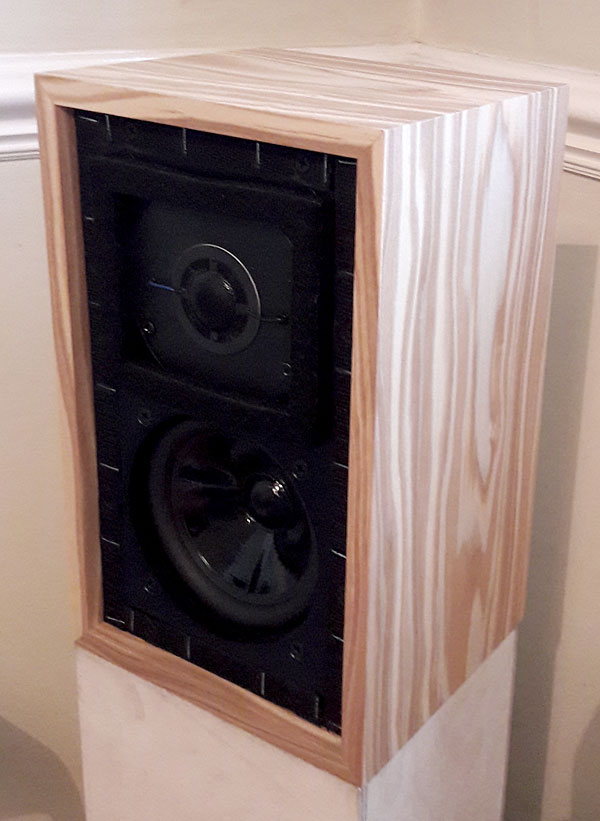
Or so it seemed. But then, in 2018, an engineer named Andy Whittle approached Wo Kee Hong with an idea: Whittle, who had served as Rogers's technical director prior to working for Exposure HiFi and then serving a 10-year stint at Audio Note UK, believed that Rogers should once again manufacture the LS3/5a in the UK. The owners agreed, a plan was drawn up, and in March 2019 the first new samples went on sale (footnote 3).
The new Rogers LS3/5a ($3350/pair), like the one manufactured by Falcon Acoustics, adheres to the pre-1987 BBC specification: It is a 15 ohm loudspeaker that connects to its partnering amplifier by means of banana-only sockets installed flush to the rear panel, and whose 19mm tweeter has a doped Mylar-dome tweeter. For its part, the Graham Chartwell LS3/5a is an 11 ohm (post-1987 spec) unit with a fabric dome tweeter and multiway connectors of the more common sort. Beyond those distinctions, the design brief is more or less the same: Both speakers employ a balance-veneered enclosure made of 12mm plywood, a 110mm midrange/woofer with a doped Bextrene cone, a fabric grille, and a slightly complex phase-correcting crossover network made to the BBC's very precise specifications.
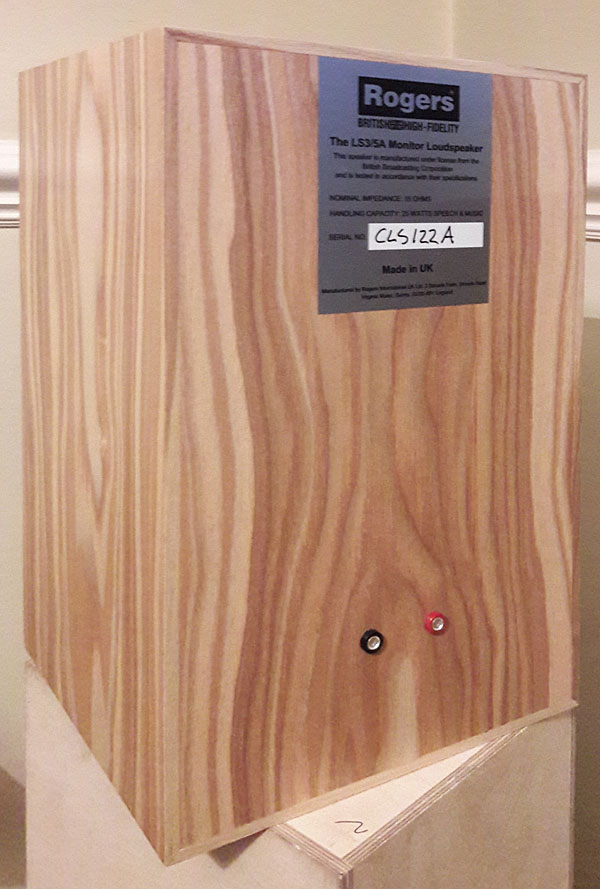
Other, subtler distinctions exist. On the Graham Chartwell speaker, the tweeter's perforated-metal cappello saturno grilles were held in place magnetically; on the Rogers speakers they are cemented in place. The banana sockets on the Rogers speakers, which I happen to like a lot, are silver plated, in contrast with the gold plating used on the Graham Chartwell (and most other manufacturers') connectors. The Tygan-fabric grilles on both speakers are held in place with Velcro, yet the grilles on the Rogers speakers are far easier to remove, thanks to the addition of fabric pull loops.
There are also differences in the sourcing of the drivers. Loudspeaker manufacturer KEF no longer offers the exact same tweeter and mid/woofer originally specified by the BBC—so, Graham Audio commissioned well-known designer Derek Hughes to engineer their replacement drivers, the provenance of which I don't know. For the new Rogers LS3/5a, Andy Whittle reverse-engineered both drivers. He told me via email: "The bass unit has the correct Bextrene cone and is made in Asia. The bass units come to the UK, where they are QC'd and then hand-doped with two layers of damping and then pair-matched. The tweeter is the correct Mylar material; the coil/ dome assembly is made in Asia and comes to the UK where we assemble it into the magnet system, QC [it], and then pair-match." The manufacturing of the crossovers and cabinets, and all loudspeaker assembly work, is performed in the UK, at Rogers's facility in Virginia Water, which sounds like an ingredient in Mountain Dew but is actually a very posh suburb to the south of London.
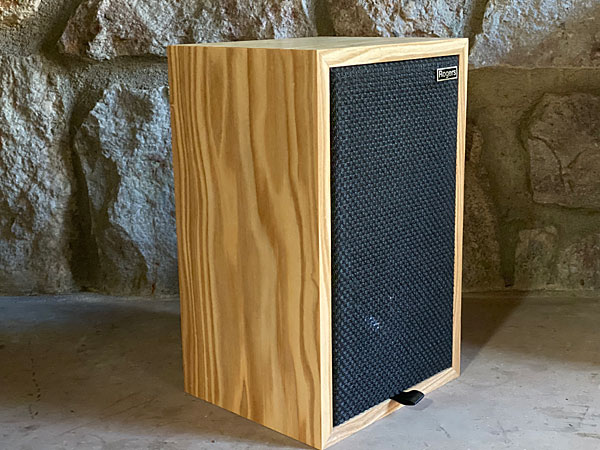
I made my stand
Unfortunately, by the time I requested a review pair of the Rogers LS3/5a, the excellent 24" Gig Harbor loudspeaker stands ($599/pair), which I used in my earlier review, were no longer in my possession; likewise the undeniably complementary Naim NAIT 2 integrated amplifier (footnote 4), reconditioned by AV Options, which I also used with the other LS3/5a's: gone, gone, gone.
For the former, I had to improvise, pressing into service a pair of 20"-tall open-frame metal stands that have followed me through one apartment and four houses—and I have no recollection whatsoever who made them. These I topped with stacked-plywood scraps from some long-ago plinth project, to bring their height near to the required 24": an imperfect solution but a solution nonetheless. Amplification was more straightforward: I had already been running in my review sample of the Naim NAIT XS 3 integrated amp ($2999 including built-in phono stage; review coming soon), and I felt sufficiently familiar with its contribution to the sound that I could use it to describe, with confidence, the character of the new speakers. Speaker cables were the same 21' pair of AV Options Twisted 56 speaker cable I used for the earlier review ($674 plus $195 for the Deep Cryo treatment).
From the first notes of the first song I played through the Rogers speakers—the Byrds' "Eight Miles High," from the David Crosby box set Voyage (3 CDs, Atlantic/Rhino R2 77628)—I was enchanted by the combination of the NAIT's rhythmic forthrightness and speed (what some wags refer to as the Naim Audio happy sound) and the trippy explicitness of the Rogers speakers. The latter also performed the archetypal LS3/5a trick of fooling my ears into thinking that Chris Hillman's electric bass sounded deeper and more powerful than those tiny woofers could ever manage, and presented the singing voices of Crosby, Gene Clark, and Roger McGuinn with utterly convincing spatial presence.
Rest assured, here was that LS3/5a explicitness at its smoothest and easiest to take. There was no sonic edge tagging along with those crisply realistic and perfectly aligned note attacks. One song into the game, and I already felt uplifted.
Turning to one of my favorite collections of shorter orchestral pieces by Elgar—that by Paul Goodwin and the English Chamber Orchestra (CD, Harmonia Mundi HMU 907258)—the composer's Nursery Suite sounded especially fine, with great momentum (not to mention an appropriate degree of clatter) in Part Five ("The Wagon Passes"), decent if not astonishingly tactile pizzicato notes in Part Six ("The Merry Doll"), and nice string tone and texture in Part Seven ("Dreaming–Envoy"). As for the last bit, yes, Shindo tubes and DeVore O/93 speakers gave better texture and color, but the Naim/Rogers combo almost made up for it with their non-sterile details of playing and conducting technique. The Suite sounded so good that I left the disc in all the way to the end—Elgar's Elegy, composed in response to the death of his dear friend (and "Nimrod" inspiration) August Jaeger—and again the LS3/5a gave refreshingly good insight into Goodwin's conducting and the manner in which he kept the poignant little piece from bogging down.
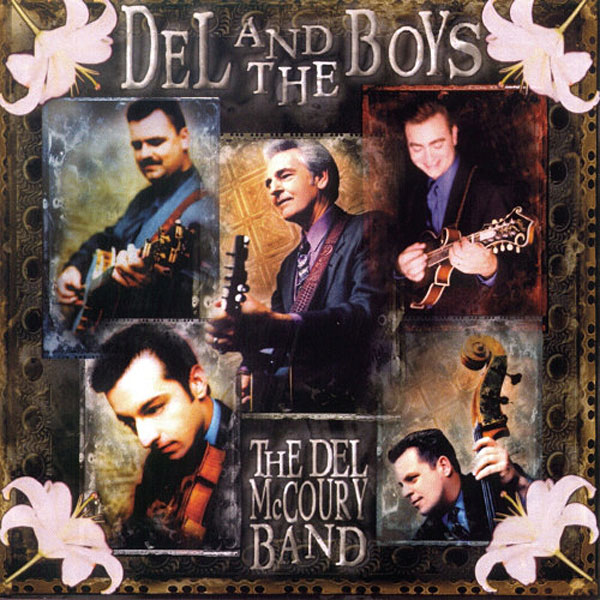
Richard Thompson's "1952 Vincent Black Lightning," in the masterful version by the Del McCoury Band (Del and the Boys, CD, Ceili CEIL2006), along with the same album's "All Aboard," provided more examples of how well the Rogers LS3/5a served up a convincing illusion of extended low-frequency response. Mike Bub's double bass had nicely rounded tone and surprising weight. Far less surprisingly, the sound of that instrument had tremendously good rhythmic snap: Through this amplifier/ speaker combination, it drove the song to a fare-thee-well. At the other end of the spectrum, Del's wonderful tenor voice came across with all its texture intact—an iota more would have been too much. Imaging specificity (not to mention the presence and wholeness) of the lead vocal were exceptional.
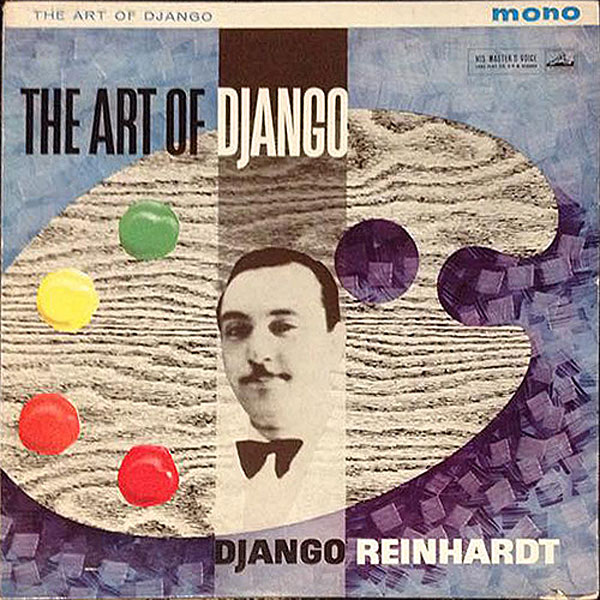
Stereo imaging is all very nice, but I get more force and touch from some of my favorite mono recordings, so I turned to my favorite Mahler Symphony No.1, by Dimitri Mitropoulos and the Minneapolis Symphony Orchestra (CD, Sony Classical MHK 62342). The pizzicato strings at 2:44 were wonderfully tactile, and the colors of the woodwinds and the lower strings in particular were well-saturated. Better still, even with such a microscopic perspective on the recording, the glories of the sound did not detract from the flow of the music. And here, as with most other recordings I tried through the Rogers LS3/5a's, scale was shockingly good for such a tiny speaker. Scale was also huge on another mono favorite: Django Reinhardt's "Body and Soul" from The Art of Django (CD, BGO Records BGOCD 198). The sound was also in perfect tonal balance, and again I heard relentless musical momentum.
The only recordings I played through the speakers with less-than-enjoyable results were contemporary (and mostly digitally recorded and/or mixed) pop recordings. For example, the lead voice and autoharp on the title song from PJ Harvey's Let England Shake (CD, Vagrant VR651) were brittle. Here was the only time this speaker's pro-audio origin raised its techy little head and intruded upon the music making—although I suppose that's what you want if you're a recording engineer who needs to hear what's going on in the mix. (Would that they might act on that information from time to time.)
Pressed to offer a quick'n'dirty sum-up of the new Rogers LS3/5a, especially with an ear to its standing among other contemporary examples of the breed, I would describe this one as closer in character to the Falcon than the Graham Chartwell LS3/5a: It was every bit as open and detailed as the former, with perhaps slightly more freedom from audible stress at the loud end of the dynamic spectrum—without having both on hand for a side-by-side comparison, it's impossible to say for sure—and not as rounded and forgiving as the latter. But the Rogers speaker was consistently free from unnatural texture: Those wide-open trebles were never the least bit distorted. And although its bass range was less powerful-sounding and rich than that of the Graham Chartwell LS3/5, the Rogers had the clearest, most explicit, and most temporally involving bass range of any minimonitor of my experience.
Yes, any so casual a comparison puts the reviewer at risk of the sort of bias that favors the newer, more recently experienced sample. As I write this, although I could live happily ever after with any one of the three extant true LS3/5a's—the Falcon, the Graham, and the Rogers—it seems the Rogers produced the most smiles, an impression that might be colored by my pro–banana-jack bias, the samples' distinctive olivewood veneers, or any number of other nonessentials. So, compare them yourself if you can manage it. I guarantee that time spent comparing these three superb speakers will be a hell of a lot of fun.
Footnote 3: There is no connection between Rogers International and American amplifier manufacturer Rogers High-Fidelity.—Ed.
Footnote 4: That's a joke. Sort of.

you know I am jealous - right?
hr

IMO it's just a different representation.
Has its time and place. Sometimes it captures the art better.

Mono e mono :-) .....

Hi
When I was a small kid, AM/SW radio was the only entertainment available at home when TV was still nowhere.
Yet today, monaural music still can't kick in as it still can't touch stereo music in bringing back home live performance.
Every single LP is stereo recording out of my 1,000+ vinyl collection.
Sorry, no no monaural !
Listening is believing
Jack L

Chrome won't let me visit the importers webpage, it crashes with a security error. And the phone number? Either they don't answer or you get a fax dial-tone. I'm afraid this is one piece of exotic imported goods it's best to avoid.

Remember the days of chatting about amps in price per pound rather than dollars per watt?
This speaker reminded me of that!
5.5 pounds per speaker, $3350 per pair.
1675 bucks per 5.5 pounds = 304 dollars per pound.
The Wilson Alexx speakers weigh 452 pounds each, cost 109,000 dollars per pair...only 120 dollars per pound.
Perhaps the Wilsons are a relative bargain.
Golden Ear Triton reference is 10K per pair, 108 pounds each. Only 46 dollars per pound.
All this is apropos of nothing.

Could you calculate the Wilson XVX price per pound, please ....... XVX may be the best bargain in the world ....... While you are at it, may be you could also calculate the Wilson Master Chronosonic ....... That one may be the the best value in the entire universe (at least the universe we live in ) :-) .......

Maybe you can find the best pound for pound speakers!

Dayton Audio B652, reviewed by Stereophile ....... Weighs about 6 pounds and costs about $40/pair ....... So, less than $7 per pound ........ Well wait ...... Each speaker costs $20 ........ So, less than $4 per pound :-) .......

Hi
"Best sound" to whom? To you maybe best sound but to someone else could be only so so. One man's meat can be another's poison.
Best sound for the worst dollars I would suggest Audio Note of Japan "Kegon" 17W+17W stereo power amp sold for USD$125,000 on sale 10 years back. I auditioned it & I love its sound - so elegant so engaging (using 300B filament-direct-heated triode power tubesx4) though I hated its price.
Listening is believing
Jack L

Both Stereophile reviewers of those Dayton Audio speakers, liked their sound :-) ........

Oh BTW ........ You could buy the VAC Statement amps, reviewed by Stereophile ...... VACs can put out more power :-) ........

If they haven’t already, Fahey aficionados should do themselves a favor and have a listen to Jim O’Rourke’s Bad Timing (1997) and The Visitor (2009), both on Drag City records. (n.b. IIRC neither is available on streaming, but can be had on FLAC from the aforementioned label for a very reasonable price). I believe that Bad Timing in particular was instrumental (heh) in introducing Fahey’s sidelong blues to a new generation of players and listeners like myself.

Wouldn't it be wonderful to have a place where all those Magical little Loudspeakers could be compared, loved, admired, examined and purchased.
I had just that place at my Esoteric Audio in Farmington Hills. We kept nicely broken-in Quad 63s, LS3/5a, Pro-Ac Tablettes, Linn Kann, Spica TC-50, Kindel 50s & 100s, Celestian SL6 & SL600s, along with guest Loudspeakers up for Evaluation using our VPI Table, Koetsu Rosewood, Electrocompaniet or Conrad Johnson or Audible Illusion with MIT cable interfaces. 1985 a wonderful time for music gear explorations.
There should be a special place in Stereophile for outstanding products that changed everything in the hobby. The LS3/5s should be enshrined into that HALL of FAME.
Tony in Venice

... between the late 1990s and 2019, how then can there have been reviews of the Rogers LS3/5a 65th Anniversary Edition in 2015?
https://www.stereo.net.au/reviews/rogers-ls3-5a-65th-anniversary-edition-loudspeakers
https://6moons.com/audioreviews2/rogers/1.html
Then there's this Rogers LS3/5a review from back in 2008:
https://www.hifinews.com/content/rogers-ls35a-%C2%A31495

Moving to an urban area could cause 'amnesia' :-) .......

I'm willing to accept that these sound good in some weird, special kind of way, since Stereophile reviewers love them. But...I don't get it. There's that upper-bass bump, that mid-range bump, and that rising treble...why doesn't anyone try to improve them, rather than reproducing all these flaws? How about a slightly larger version with better bass extension...and flatter response? Wouldn't that sound even better? I guess I just don't get it.

... the LS3/5a, then get the Harbeth P3ESR.
https://www.harbeth.co.uk/hifi-speaker/11/Harbeth-P3ESR-loudspeaker
As HR said, the "Harbeth's P3ESR 40th Anniversary Edition is the best-built, most natural-sounding small speaker I have ever heard."
https://www.stereophile.com/content/harbeth-p3esr-40th-anniversary-edition-loudspeaker

Those BBC loudspeaker designs are licensed to manufacturers that are NOT allowed to alter or variant. Your Spendor LS3/5a will sound identical to the Rogers, Chartwell or any other maker.
The Linn Kann & Pro-Ac Tablette variants are civilian purpose "improved" versions of the BBC design.
Tony in Venice

... presently in production are using drivers from KEF, so in that regard they all represent only an approximation to the original design.
At one time, the BBC furnished to its licensees a calibrated reference speaker against which the performance of all production units was to be verified. Is that still being done?

I have no experience with these NEW drivers so this Review Sample has to serve as the important reference as to any probable performance differentials.
I anticipate only slight differences.
Didn't the reviewer contact BBC, like we'd hope he would, to discover important background details. ?
Still, we'll find out soon enough as various folks owning a "vintage" pair will write about their experiences.
Tony in Venice

Tony, these speakers do not sound identical.
I had the Stirling LS3/5a v2, the Graham LS3/5a, and Chartwell LS3/5 in my home for a fun test last summer; close family, yes, but not identical triplets.
Art reviewed pretty much the same models (in January, I believe), and I agree with his findings and almost his preference (I bought the 3/5 due to its "voice-tone" (for our TV)). One could say their differences lie mostly in the field of being transparent to source rather than transcendent to sauce - they all really "got it" in spades.
I don't think the Harbeth P3ESR is BBC-licensed, but I suspect it would qualify, if Harbeth wanted to subscribe.

Those versions you had might've been able to be bench adjusted to have nearly identical performance, presuming that drifting or tolerances were the factor in their variations in sound quality. "Back in the Day" tolerances of 10% +/- were rather common with Manufacturers building to spec. rather than to Anechoic Chamber measurements.
I recall the LS3/5a as a breakthrough Loudspeaker Design that paved the way for further developments.
When I first heard a pair in a London HiFi specialist Shop I was stunned that such wonderful performance ( especially vocal ) could be originating from those "tiny" little boxes. Phew !!! I had to buy them on the spot. Even today, civilians hearing recorded music thru LS3/5a can't believe it's all coming from those little boxes.
Does anyone know if the BBC Designs for Loudspeakers are still viable or in manufacturer?
Tony in Venice

Somebody said, BBC wanted the voice of Louis Armstrong to sound real :-) .........

Voices are what immediately captured me.
Opera Voices sounded more realistic than any Transducer System to date. ( 1980s )
My own Mother was an Opera performer, no transducer could fool me but the little BBC remains dam good with vocals.
Tony in Venice
ps. Armstrong was long gone by the time KEF developed that Driver

BBC might have used Louis Armstrong's voice recordings ........ BBC might have had some of his interview recordings and might have remembered, how he sounded ........ I think one of his last song recordings was for one of the James Bond movies which was released in 1969, 'On Her Majesty's Secret Service' :-) ........

BTW ..... That is the only James Bond film George Lazenby acted as the James Bond :-) ........

...of auditioning these in 1981, I have. To say that a loudspeaker is 'flawed' for not being full-range or for having insufficient bass extension is one thing, and one might look past these limitations (as most of us do without realising it by virtue of not having the necessary to purchase those models that are deficient in neither). The Ls35a, however, is simply not fit-for-purpose as a High-Fidelity loudspeaker unless employed in its strictest BBC-sense -- for listening to vocals and nothing else. Good for radio announcers, but not for Music.
That vivid memory? I had 'Faith', the new Cure LP with me when I was auditioning for new loudspeakers. I listened to the Rogers, some slate-ended JBEs, Linn Kans, Mission 770s, AR18s, and some others I now forget. First-up the LS35a (on Dealer-recommendation), the demo guy cued-up Track 1 ('The Holy Hour') with its 6-string bass intro -- and I laughed at their reproductive ineptitude. The level couldn't have been more than 70 db and their cones were bottoming immediately, hopelessly, and on every note with vast amounts of distortion. He couldn't believe it and was so embarrassed that he went through his entire stock that afternoon and I had the audition of a lifetime. I came away with one of those mentioned loudspeakers that I still use to this day. It was not the Ls35a.
Our definition of 'high-fidelity' cannot be so restrictive that a loudspeaker -- and a feted and pricey one at that -- can only be so-described with the most limited of programme material. But then 'high-fidelity' today is so often about 50s trumpeters/saxophonists and 'audiophile female vocals' that it's perhaps not too surprising that these pants-loudspeakers still get such praise.
That the Ls35a has "...gained a following for its suitability as a domestic loudspeaker" makes about as much sense as the existence of #BetterOnCassette until you realise the 'why' of adherence to both, and it has nothing to do with Fidelity.
It took me 6-weeks to get my record back from the dealer as they used this track in all their demos thereafter, and I was happy for them to keep it as we all learned something that day. Thank you (the late) 'Simply HiFi' (Hull, UK) for that experience 40 years ago -- I have never looked at a review of a sub-8" bass-driver or a ported cabinet with anything other than a chuckle since...

The $1,500/pair, Wharfedale Lintons (reviewed by Stereophile) may be a better value than the BBC LS3/5a ........ Linton has 8" bass/mid driver :-) .........

and with a blousey bass. I prefer a loudspeaker that doesn't make demands of the room it's in, so its acoustic suspension for me. I'd consider trading up to the Magico M5 if I got on with their treble and way-out-there for an Apogee Scintilla if I could ever hear them and they're that good, but otherwise I consider myself fortunate to have found my forever speaker when I was in my teens. That's where I'm staying :)

Which one is your 'forever' speaker? ........ May we know? ....... Just curious :-) ..........
Hi-Fi news recently reviewed the Magico A1, which is an acoustic suspension design ........ You may be interested in that speaker :-) .........

... only one of which has an 8" bass unit and is a sealed-box. You can find out easily enough but I won't say its name as I buy them when I find them to ensure an adequate number of driver spares. Part of the reason for its excellence is the crossover -- one component, with the bass driver connected directly to the amplifier -- an effectively 'active' passive speaker.
As for Magico, the A1 looks interesting but I could never justify new Magico prices (plus that $7500 price is £9.995 here after importation -- no way) -- €15k for a S/H M5 is a different matter though. Regarding Dirac, I'm vinyl and all-analogue so no-go.
cheers!

Some of the bass-reflex design speakers come with port blocking 'bungs', which can turn them into acoustic suspension design ........ I think those 'bungs' are also available from third party vendors which can fit multiple speaker models .......
The Magico A1 is priced at US$7,500/pair :-) .........

...plug the port on a bass reflex speaker and turn it into a correctly performing acoustic suspension speaker. There are very different requirements for both the woofer parameters and the enclosure size for BR vs AS. Those "bungs" are normally made of foam, which only partially block the port and are meant to reduce bass output in difficult rooms with bass peaks.

Agreed ...... Those 'bungs' are, like you said, band-aid approach for some few difficult rooms ....... Majority of the speakers made at the present time are bass-reflex designs ........ Like I mentioned, room compensation technology like the 'Dirac live' could help ........ Also, adding separate subwoofers could help ....... Many of the powered subwoofers come with some type of adjustable room compensation controls :-) ........

BTW, if you can use newer technologies like 'Dirac Live', you could modify the frequency response to suit your listening room ...... See, Stereophile review of NAD M10 with 'Dirac Live' :-) ........

... audition any of the acoustic-suspension speakers from ADS, such as the L520 (8" woofer) or the L620 (10" woofer)?
https://img.canuckaudiomart.com/uploads/large/1289112-ads-l520-loudspeakers.jpg
https://img.usaudiomart.com/uploads/large/816579-ads-l620-w-covers-stands.jpg

What was imported from the US at that time was limited relative to today, and that's too bad as these ADS designs -- completely new to me -- look to have much of worth. Those butyl surrounds sort the biggest problem with vintage AS speakers straight off the bat, but I don't see why these large-cab, 2-way, large-woofer designs have to have such complex, inductor-packed crossovers unless they're designed for free-space siting (and I'm not keen on fused tweeters when there's ferrofluid).
If only some bright-spark could make a butyl surround of the correct compliance to fit Ed Villchur's speakers...

NHT is another company which makes several models of acoustic suspension speakers ....... NHT speakers are reasonably priced :-) .......

... for the ADS L520 and/or L620?
I'd like to see just how complex and "inductor-packed" they might be.
Regarding fuse protection for the tweeters, ADS may have been wisely trying to proactively reduce their potential warranty costs. Given that these speakers sold for about $300-400/pr., it's not unlikely that they would be used with a receiver having a comparable price tag. Such units, 40-odd years ago, typically had a maximum power output in the range of 30-40W. Enthusiastic listeners might tend to regularly drive their amp into clipping, thus endangering the tweeters. The fuses would help protect the tweeters against failure and thus minimize the need for repairs while the warranty was still in effect.

https://www.ebay.com/itm/192189746736
I suppose it's only 'complex' relative to an AR18s, but I don't see why such a large cab/bass-unit combo should have such baffle-step problems as to require this much on the inductance front. There's an as-new pair on USA Audio Mart as I type...

Current MSRP for KEF LS50 is about $900 with discounts available. Or one can purchase a pair of LS3/5a copies for about $3k or a pair of original LS3/5a for about $1500. Which is the better value ? The LS50 delivers comparable imaging, extended treble, deeper bass, and can play louder. I know my answer. FYI- I own a pr of LS50 and a pr of c1980 15ohm LS3/5a.

... a pair of JR149 speakers and the matching Super Woofer?

...these were long ago (in the UK, at least) affected by the same price-craziness as the 35a, although why anyone would want a speaker that looks like a 1972 cigar case is beyond me!
I'm going back to the early 80s now, but do you know about the colossal stereo bass-bins that Rogers marketed with the LS35a for a while? This was matched to the LS specifically, so presumably would be ideal for those who must have that speaker's plus-points...

... might be interested in the JR149 speakers.
https://i.imgur.com/KNBtWsJ.png
A full copy can be downloaded from the link on this site:
https://www.audiosciencereview.com/forum/index.php?threads/popular-hi-fis-subjective-evaluation-of-30-speakers.12049/
Regarding the "colossal stereo bass-bins", are you referring to the Rogers Reference System that combined the LS3/5A with the L35B low frequency unit and the XA75 electronic crossover?

Apple HomePod, some Sonos models and even B&W Formation Duo are copies of JR149 design :-) ........

I don't know about JR149 but, JBL JR POP is on sale for $29.95 :-) .........

Small well balanced monitors have been the hidden gem in the JBL, Infinity and Revel lines for a generation now. I've long believed that at the end of the day the hi-fi press prefers a certain amount of coloration, especially through the mid-range, where ironically you'd want the least amount of distortion, coloration or frequency bump or suckout. And if it's British and cost 10 times the material sheet instead of 3-4 times, then it's likely brilliant! I've long considered AD my favorite reviewer, since being a Listener reader back 15 years now. His love for this speaker when so many British, American and Canadian firms were simply making much better speakers for much less money will always be a head scratcher for me. I just don't get it. RIP Art, we'll miss ya.

Small well balanced monitors have been the hidden gem in the JBL, Infinity and Revel lines for a generation now. I've long believed that at the end of the day the hi-fi press prefers a certain amount of coloration, especially through the mid-range, where ironically you'd want the least amount of distortion, coloration or frequency bump or suckout. And if it's British and cost 10 times the material sheet instead of 3-4 times, then it's likely brilliant! I've long considered AD my favorite reviewer, since being a Listener reader back 15 years now. His love for this speaker when so many British, American and Canadian firms were simply making much better speakers for much less money will always be a head scratcher for me. I just don't get it. RIP Art, we'll miss ya.